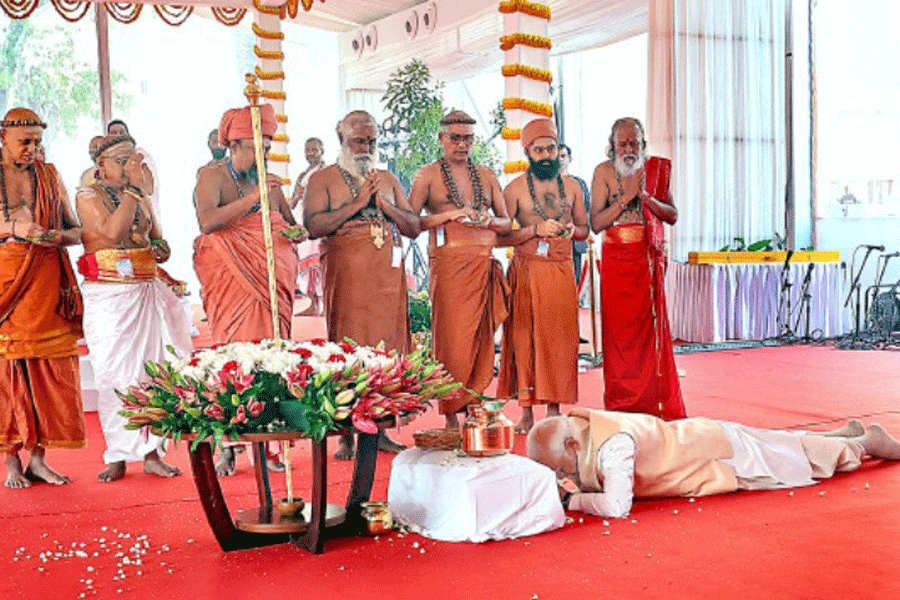The new Parliament building was inaugurated by Prime Minister Narendra Modi on Sunday morning with the President, Vice-President and the entire Opposition missing, making it almost a one-man show that also delivered a blow to federalism as the Chairman of the Rajya Sabha — the Council of States — could not be accommodated owing to protocol issues.
In the Warrant of Precedence, the Vice-President comes after the President and before the Prime Minister. Since the President was not invited to do the honours — though Article 79 of the Constitution states that Parliament shall consist of the President and the two Houses — the Vice-President also could not attend despite being the Rajya Sabha Chairman too. The only person who was allowed to share the limelight with the Prime Minister in part was Lok Sabha Speaker Om Birla.
The Opposition stuck to its resolve to stay away from the inauguration despite the government’s efforts to drive a wedge, first by selecting Hindutva ideologue Veer Savarkar’s birth anniversary as the day to inaugurate the new building and then to bring in the sengol (sceptre) narrative once 20 political parties came out with the joint statement early last week announcing their decision to boycott the function in protest against the sidelining of the President.
While the Uddhav Thackeray faction of the Shiv Sena, which has had issue with the Congress’s criticism of Savarkar, surprised everyone by joining the Opposition boycott despite the Modi government choosing Savarkar’s birth anniversary for dedicating the new building to the nation, the DMK remained steadfast even as the government and the BJP began the drum beating about the sengol, invoking Tamil pride and claiming to have given Tamil Nadu its due in the Independence narrative with the installation.
The morning inauguration was full of religious symbolism, beginning with a traditional puja with Vedic rituals that was followed by the Prime Minister receiving the sengol from Saivite adheenams who had been brought from Tamil Nadu as a throwback to what their forefathers had done on August 15, 1947, before Jawaharlal Nehru’s historic “Tryst with Destiny” speech.
In almost like fashion, Modi was draped with a rich silk shawl before he was handed the very same sengol that was given to Nehru at his residence on August 14, 1947. The similarity ended here as Nehru — separating the personal from the public — did not take it to Parliament House when he went to deliver the “Tryst with Destiny” speech.
On Sunday, Modi — after prostrating before the sengol in a show of reverence — carried the sceptre in a procession of adheenams to the Lok Sabha to install it right behind the Speaker’s chair in a specially made enclosure to religious chants and also a rendering of the Vande Mataram.
The sengol installed in what the government claims is due recognition to the “transfer of power” moment of August 1947 — though there is no verified documentation of this — the Prime Minister returned to where the council of ministers and some chief ministers were gathered to felicitate a few men who had worked on the Parliament building project.
The religion-laden inauguration — the first part of a two-part programme — was wrapped up shortly afterwards with an all-faith prayer meeting that sought to showcase India’s religious diversity after an assertion of Hindu religiosity.










